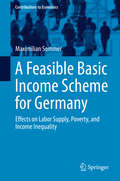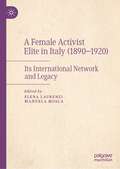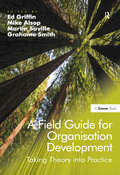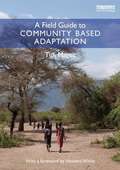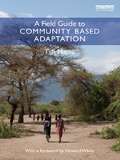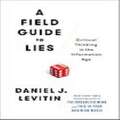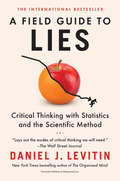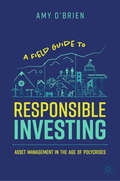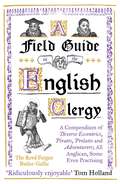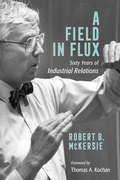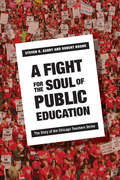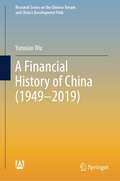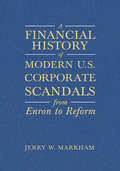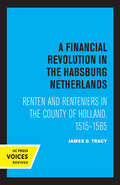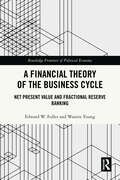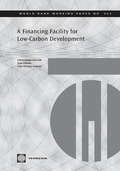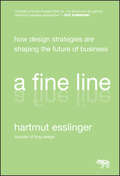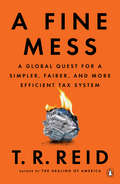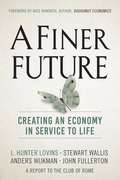- Table View
- List View
A Feasible Basic Income Scheme for Germany: Effects on Labor Supply, Poverty, and Income Inequality (Contributions to Economics)
by Maximilian SommerThis book analyzes the consequences that would arise if Germany's means-tested unemployment benefits were replaced with an unconditional basic income. The basic income scheme introduced is based on a negative income tax and calibrated to be both financially feasible and compatible with current constitutional legislation. Using data from the German Socio-Economic Panel (GSOEP) the author examines the impact of the reform on the household labor supply as well as on both poverty and inequality measures. It is shown that by applying reasonable values for both the basic income and the implied marginal tax rate imposed on earned incomes, efficiency gains can be reconciled with generally accepted value statements. Furthermore, as the proposal includes a universal basic income for families, child poverty could be reduced considerably. The estimates are based on the discrete choice approach to labor supply.
A Female Activist Elite in Italy (1890–1920): Its International Network and Legacy
by Manuela Mosca Elena LaurenziThis book explores and traces the progressive activism and radical ideas of several elite women in Italy beginning in the early 20th century. It discusses the shared political culture that shaped the thinking and the activity of these women, mainly oriented towards political philanthropy and work, seen as the cornerstone of a comprehensive redefinition of gender relations. It also discusses the connections linking them to an international network of women involved in similar political actions and economic initiatives addressing women’s' interests, as well as their legacy for the next generations. With essays from a range of scholars, this book provides an interdisciplinary framework for understanding these activists and deals with methodological and historiographical issues in reconstructing women’s contribution to history.
A Field Guide for Organisation Development: Taking Theory into Practice
by Martin Saville Grahame Smith Ed Griffin Mike AlsopOrganisation Development, as a field, is messy, imperfect and hard to get hold of - it is like nailing jelly to the wall. A Field Guide for Organisation Development offers a variety of perspectives and unparalleled experiences from practitioners and researchers who all share an interest and involvement in Organisation Development (OD). In it are multiple voices, mindsets and practices - not all of which necessarily agree with each other. Leading OD practitioners present a contemporary, practical guide that tackles the dilemmas and polarities that face anyone studying or practising within the OD arena, and encourages them to develop their own particular practice of OD in a way that is appropriate for their context, skills and preferences, while challenging them to look beyond what comes naturally. Here are new ways to support the growth and development of an organisation from modest endeavours that are small in scale to organisation-wide change programmes. A Field Guide for Organisation Development is as comprehensive a resource to support the practice of OD as can be found anywhere. It covers issues of organisational health as well as offering tools aimed at supporting practitioners to survive in the harsh realities of organisational life. It contains chapters on the OD practitioner, on groups, on culture, on data and evaluation. It offers perspectives on change, on the relationship between OD and HR, and on the use of external consultants.
A Field Guide to Community Based Adaptation
by Tim MageeThis book illustrates how including community members in project design and co-management leads to long-lasting, successful achievement of development and adaptation goals.
A Field Guide to Community Based Adaptation
by Tim MageeThe world's poor will be the most critically affected by a changing climate—and yet their current plight isn't improving rapidly enough to fulfill the UN’s Millennium Development Goals. If experienced development organizations are finding it difficult to solve decades-old development problems, how will they additionally solve new challenges driven by climate change? This book illustrates how including community members in project design and co-management leads to long-lasting, successful achievement of development and adaptation goals. This field guide provides a system of building block activities for staff on the ground to use in developing and implementing successful adaptation to climate change projects that can be co-managed and sustained by communities. Based on years of use in 129 different countries, the techniques illustrated in this field guide use a step-by-step progression to lead readers through problem assessment, project design, implementation, and community take over. The book equips development staff with all the tools and techniques they need to improve current project effectiveness, to introduce community based adaptation into organizational programming and to generate new projects. The techniques provided can be applied to broad range of challenges, from agriculture and soil and water challenges, to health concerns, flood defences and market development. The book is supported by a user-friendly website updated by the author, where readers can download online resources for each chapter which they can tailor to their own specific projects. This practical guide is accessible to all levels of development staff and practitioners, as well as to students of development and environmental studies.
A Field Guide to Ghost Guns: For Police and Forensic Investigations
by Robert E. WalkerWhile it has always been legal for a citizen in the United States to manufacture their own firearm, the sale and distribution of such items is illegal under current U.S. law. The primary impediment to individuals making their own weapons has been access to the tooling and machinery required to convert raw materials into finished parts for assembly. However, in the last fifteen years this paradigm has changed drastically. Home builders and companies have emerged to support individuals who choose to produce their own firearm. Kits with receivers and gun components are available for hobbyists, as are 3-D printable gun designs, downloadable from the Internet in some cases. This phenomenon has led to the term ghost guns: firearms whose existence is not reported to any third party and therefore whose existence is unknown and, largely, untraceable. A Field Guide to Ghost Guns: For Police and Forensic Investigators provides a useful brief for field investigators on the technical aspects of the self-made firearm, so-called "ghost guns. The first book to focus on the emergent issue of ghost guns, coverage addresses the history of firearms making and manufacture in the U.S.—including regulated and nonregulated manufacturing, details firearm components and accessories, how to assemble a Firearm, an overview of common Types of ghost guns, and investigative considerations. Though there have been increased calls to regulate guns in the wake of numerous mass shootings, the proliferation of ghost guns—and their increasing use in crimes—would likely require additional laws and regulatory measures. Since there are few knowledgeable firearm practitioners in the field, who can render qualified opinions on the subject, author Robb Walker has taken a practical, pragmatic approach to the topic. The book defines terminology, provides photographs, and explains the concepts surrounding homemade firearm in clear, easy to understand terms. Key Features: Addresses the technology and technical aspects in creating, assembling, and/or modifying homemade firearms—both printable and assembled from pre-fabricated components Discusses the rationale and motivations behind making one’s own firearm Outlines what is currently legal and illegal under U.S. law, providing indicators for investigators for illegally configured firearms A Field Guide to Ghost Guns addresses the pressing need for a practical reference on the topic. The book provides police investigators and forensic ballistics experts a useful aid to understand legal aspects and to identify ghost guns, and the paraphernalia—tooling and machinery, and otherwise—indicative of gun making in a non-formal, factory setting.
A Field Guide to Lies: Critical Thinking in the Information Age
by Daniel J. LevitinFrom The New York Times bestselling author of THE ORGANIZED MIND and THIS IS YOUR BRAIN ON MUSIC, a primer to the critical thinking that is more necessary now than ever. We are bombarded with more information each day than our brains can process--especially in election season. It's raining bad data, half-truths, and even outright lies. New York Times bestselling author Daniel J. Levitin shows how to recognize misleading announcements, statistics, graphs, and written reports revealing the ways lying weasels can use them. It's becoming harder to separate the wheat from the digital chaff. How do we distinguish misinformation, pseudo-facts, distortions, and outright lies from reliable information? Levitin groups his field guide into two categories--statistical infomation and faulty arguments--ultimately showing how science is the bedrock of critical thinking. Infoliteracy means understanding that there are hierarchies of source quality and bias that variously distort our information feeds via every media channel, including social media. We may expect newspapers, bloggers, the government, and Wikipedia to be factually and logically correct, but they so often aren't. We need to think critically about the words and numbers we encounter if we want to be successful at work, at play, and in making the most of our lives. This means checking the plausibility and reasoning--not passively accepting information, repeating it, and making decisions based on it. Readers learn to avoid the extremes of passive gullibility and cynical rejection. Levitin's charming, entertaining, accessible guide can help anyone wake up to a whole lot of things that aren't so. And catch some lying weasels in their tracks!
A Field Guide to Lies: Critical Thinking with Statistics and the Scientific Method
by Daniel J. LevitinWinner of the National Business Book AwardFrom the New York Times bestselling author of The Organized Mind and This Is Your Brain on Music, a primer to the critical thinking that is more necessary now than ever We are bombarded with more information each day than our brains can process—especially in election season. It's raining bad data, half-truths, and even outright lies. New York Times bestselling author Daniel J. Levitin shows how to recognize misleading announcements, statistics, graphs, and written reports, revealing the ways lying weasels can use them. It's becoming harder to separate the wheat from the digital chaff. How do we distinguish misinformation, pseudo-facts, and distortions from reliable information? Levitin groups his field guide into two categories—statistical information and faulty arguments—ultimately showing how science is the bedrock of critical thinking. Infoliteracy means understanding that there are hierarchies of source quality and bias that variously distort our information feeds via every media channel, including social media. We may expect newspapers, bloggers, the government, and Wikipedia to be factually and logically correct, but they so often aren't. We need to think critically about the words and numbers we encounter if we want to be successful at work, at play, and in making the most of our lives. This means checking the plausibility and reasoning—not passively accepting information, repeating it, and making decisions based on it. Readers learn to avoid the extremes of passive gullibility and cynical rejection. Levitin's charming, entertaining, accessible guide can help anyone wake up to a whole lot of things that aren't so. And catch some weasels in their tracks!
A Field Guide to Office Technology
by Ed SobeyWith more than 160 entries detailing everything from the junk buried in desk drawers to that mysterious box blinking away in the coat closet, this practical guide navigates through modern office technology. Each entry includes a functional description of a device (what it is and how it works) as well as particulars on who invented it and how its design has evolved over the years. Devices are grouped according to their habitats--in the conference room, hanging from the ceiling, or connected to a computer--to assist in quick and easy identification. Solving office mysteries, such as why telephone keypads have their ones in the upper left corner while calculator keypads place the ones in the lower left corner, this fascinating resource decodes the often confusing technological landscapes of everyday offices.
A Field Guide to Responsible Investing: Asset Management in the Age of Polycrises
by Amy O'BrienFor years, responsible investing has been a bewildering precinct in asset management. To many, the idea of aligning your values with your investment portfolio seemed naive. Slowly and steadily, responsible investing morphed from a movement into an industry on course to command $50 trillion in assets by 2025— a third of the capital at work in the markets. And yet responsible investing has remained as difficult to traverse as ever. It&’s drawn fire from critics who&’ve branded the approach &“woke capitalism&” whilst more &“responsible&” generations of investors are poised to marshal trillions of assets of their own into the business - we are at an inflection point. As a responsible investing practitioner for more than 25 years, author Amy O&’Brien has taken part in this revolution in asset management. With geopolitical conflicts, economic instability, and climate change fomenting unprecedented &“polycrises&”, she believes there is no more effective way to address the challenges of the 21st century than through responsible investing. Like most tectonic shifts in asset management, responsible investing has been complicated, hard to define, and hard to measure. But doing so is not only possible, it's also imperative. Over nine chapters, the book takes readers on a journey of the evolution of responsible investing, how it works today, why it&’s integral to investment considerations, and how we can finally get a grip on its efficacy. It&’s time to demystify and unpack this invaluable method for managing our assets, and our futures.
A Field Guide to the English Clergy: A Compendium of Diverse Eccentrics, Pirates, Prelates and Adventurers; All Anglican, Some Even Practising
by The Revd Butler-GallieA Book of the Year for The Times, Mail on Sunday and BBC History Magazine Judge not, lest ye be judged. This timeless wisdom has guided the Anglican Church for hundreds of years, fostering a certain tolerance of eccentricity among its members. Good thing, too. The &‘Mermaid of Morwenstow&’ excommunicated a cat for mousing on a Sunday. When he was late for a service, Bishop Lancelot Fleming commandeered a Navy helicopter. &‘Mad Jack&’ swapped his surplice for a leopard skin and insisted on being carried around in a coffin. And then there was the man who, like Noah&’s evil twin, tried to eat one of each of God&’s creatures… In spite of all this they saw the church as their true calling. After all, who cares if you're wearing red high heels when there are souls to be saved?
A Field in Flux: Sixty Years of Industrial Relations
by Robert B. McKersieA Field in Flux chronicles the extraordinary journey of industrial and labor relations expert Robert McKersie. One of the most important industrial relations scholars and leaders of our time, McKersie pioneered the study of labor negotiations, helping to formulate the concepts of distributive and integrative bargaining that have served as analytical tools for understanding the bargaining process more generally.The book provides a window into McKersie's life and work and its impact on the evolution of labor and industrial relations. Spanning six decades, the reader learns about the intersection of labor and the Civil Rights movement, the watershed moment of the Air Traffic Controller's Strike, his relationship with George Schultz, the shift from labor relations to human resource management, and McKersie's role in the seminal cases (Motorola, GM, Toyota) of the labor movement. A Field in Flux serves two important functions: it demonstrates how people have influenced past employment policies and practices when called to action in critical situations, and it seeks to instill confidence in those who will be called on to address the big challenges facing the future of work today and in the years to come. During a time when the basic values of industrial relations are being challenged and violated, McKersie argues that the profession must adapt to the changing world of work and not forget about the value placed on efficiency, equity, and inclusive employment policies and practices.
A Fight for the Soul of Public Education: The Story of the Chicago Teachers Strike
by Robert Bruno Steven AshbyIn reaction to the changes imposed on public schools across the country in the name of "education reform," the Chicago Teachers Union redefined its traditional role and waged a multidimensional fight that produced a community-wide school strike and transformed the scope of collective bargaining into arenas that few labor relations experts thought possible. Using interviews, first-person accounts, participant observation, union documents, and media reports, Steven K. Ashby and Robert Bruno tell the story of the 2012 strike that shut down the Chicago school system for seven days. A Fight for the Soul of Public Education takes into account two overlapping, parallel, and equally important stories. One is a grassroots story of worker activism told from the perspective of rank-and-file union members and their community supporters. Ashby and Bruno provide a detailed account of how the strike became an international cause when other teachers unions had largely surrendered to corporate-driven education reform. The second story describes the role of state and national politics in imposing educational governance changes on public schools and draconian limitations on union bargaining rights. It includes a detailed account of the actual bargaining process revealing the mundane and the transcendental strategies of both school board and union representatives.
A Financial Centre for Two Empires
by David C. Donald Jefferson P. Vanderwolk Wang Jiangyu David C. Donald Jefferson P. VanderwolkThis is a case study of legal transplant, economic development, cultural adaptation and political integration. Hong Kong's journey from British entrepôt to China's international financial centre is one of the most interesting legal stories of our time. But Hong Kong's future is even more interesting: will this region with British-origin institutions survive full integration into China and become its permanent international financial centre? Does Hong Kong have the legal infrastructure to compete effectively with Shanghai and Singapore, and even New York and London? A Financial Centre for Two Empires presents Hong Kong's story, examines its corporate economy and securities market, assesses its corporate, securities and tax laws for doctrinal soundness and appropriate remedies, and evaluates the quality of their enforcement empirically. It closes with a view of Hong Kong from the perspective of developments in Beijing and Shanghai, including an examination of the important political dimension.
A Financial Crisis Manual: Reflections And The Road Ahead (Palgrave Macmillan Studies in Banking and Financial Institutions)
by Platon Monokroussos Dimitrios Thomakos Konstantinos NikolopoulosA Financial History of China (Research Series on the Chinese Dream and China’s Development Path)
by Yunxian WuThis book summarizes the financial development of China from 1949 to 2019. This book divides the process of financial development during the past 70 years into five stages, focusing on the development characteristics of different parts of the financial institution system, including banks, securities, insurance, and other financial institutions, as well as the difficult growth process of financial markets (currency, capital, bond, and foreign exchange markets, etc.) from absence to existence, from small to large. This book objectively analyzes the achievements of China’s financial industry in the past 70 years and reveals the historical experience and enlightenment contained therein.
A Financial History of Modern U.S. Corporate Scandals: From Enron to Reform
by Jerry W MarkhamA definitive new reference on the major failures of American corporate governance at the start of the 21st century. Tracing the market boom and bust that preceded Enron's collapse, as well as the aftermath of that failure, the book chronicles the meltdown in the telecom sector that gave rise to accounting scandals globally. Featuring expert analysis of the Sarbanes-Oxley legislation that was adopted in response to these scandals, the author also investigates the remarkable market recovery that followed the scandals. An exhaustive guide to the collapse of the Enron Corporation and other financial scandals that erupted in the wake of the market downturn of 2000, this book is an essential resource for students, teachers and professionals in corporate governance, finance, and law.
A Financial History of Western Europe
by Charles P. KindlebergerThis is the first history of finance - broadly defined to include money, banking, capital markets, public and private finance, international transfers etc. - that covers Western Europe (with an occasional glance at the western hemisphere) and half a millennium. Charles Kindleberger highlights the development of financial institutions to meet emerging needs, and the similarities and contrasts in the handling of financial problems such as transferring resources from one country to another, stimulating investment, or financing war and cleaning up the resulting monetary mess. The first half of the book covers money, banking and finance from 1450 to 1913; the second deals in considerably finer detail with the twentieth century. This major work casts current issues in historical perspective and throws light on the fascinating, and far from orderly, evolution of financial institutions and the management of financial problems. Comprehensive, critical and cosmopolitan, this book is both an outstanding work of reference and essential reading for all those involved in the study and practice of finance, be they economic historians, financial experts, scholarly bankers or students of money and banking.This groundbreaking work was first published in 1984.
A Financial Revolution in the Habsburg Netherlands: Renten and Renteniers in the County of Holland, 1515-1565
by James D. TracyThis title is part of UC Press's Voices Revived program, which commemorates University of California Press’s mission to seek out and cultivate the brightest minds and give them voice, reach, and impact. Drawing on a backlist dating to 1893, Voices Revived makes high-quality, peer-reviewed scholarship accessible once again using print-on-demand technology. This title was originally published in 1985.
A Financial Theory of the Business Cycle: Net Present Value and Fractional Reserve Banking (Routledge Frontiers of Political Economy)
by Edward W. Fuller Warren YoungA Financial Theory of the Business Cycle presents a new approach to business cycle theory based on the net present value. The book develops a novel diagrammatic approach to illustrate how fractional reserve banking systematically distorts net-present-value calculations. In addition to providing fresh insights, the new diagrammatic approach provides a comparative framework that can be used to compare pre-existing theories, including those of John Maynard Keynes, Friedrich Hayek, Milton Friedman, and Robert E. Lucas, Jr.The net present value is the most important concept in the theory and practice of modern finance. As such, it is the proper framework for explaining the systematic financial losses that occur during the business cycle. Eugen von Böhm-Bawerk and Irving Fisher developed the modern theory of the net present value, and the financial theory of the business cycle developed in this book is rooted in their tradition. Although financial elements played a central role in their respective theories, Keynes and Hayek did not use the net present value. This failure created problems that still haunt business cycle theory today. This book addresses these problems and attempts to steer financial theories of the business cycle back to the course set by Böhm-Bawerk and Fisher.In addition to macroeconomists, this book will appeal to financial economists, money and banking experts, accountants, financial analysts, and businesspeople generally.
A Financing Facility for Low-Carbon Development in Developing Countries
by Philippe Ambrosi Ivan ZelenkoThis paper proposes an innovative financing mechanism, known as the Low Carbon Development Facility (LCDF) that would bring additional investment financing at concessional rates to unlock low carbon development projects in non-Annex 1 countries, increasing project-based emissions avoidance in these countries. The LCDF could be a modality of the Copenhagen Green Climate Fund to implement the financial pledges made by Annex 1 countries as a result of Copenhagen and post-COP15 negotiations to support projects, programs, policies and/or other activities in developing countries related to NAMAs. LCDF will not substitute the Global Environment Facility (GEF) and the Clean Technology Fund (CTF) and would rather support the innovative projects pioneered by these instruments.
A Fine Line
by Hartmut Esslingerpraise for a fine line "A breath of turbo-charged fresh air that doesn't regurgitate the ego-maniac CEO's selective memory or an outside expert's misinterpretations. Hartmut explains innovation through the lens of design, and it's about time we gained his valuable perspective. " -Guy Kawasaki, former chief evangelist, Apple and co-founder of Alltop. com "At Flextronics, we fell in love with Hartmut and frog, and their passion for bringing crazy great designs and design processes into the forefront of great product companies. We used their expertise to help our customers, many of the greatest product companies in the world, including Apple, HP, Cisco, Microsoft and others. It is a credit to Hartmut that in the midst of a shocking global recession, frog still sets quarterly revenue records. Theirs is a unique and fascinating story. " -Michael Marks, partner, Riverwood Capital LLC and former CEO, Flextronics "Hartmut's new approach to design is felt in every room in every house in every country and in every business around the world. He proved that thoughtful design is not only good for people but is good for business-and that both are interlinked. I have been fortunate to have observed first hand his impact at Sony, Apple, and HP?and have learned so much from him. He is an unsung hero of our times! A Fine Line is a must-read for designers and business people alike. " -Satjiv Chahil, senior vice president, Hewlett-Packard "A fascinating, breathtaking, and exemplary insight into a success story that never had so much topicality, and so much informative potential as just now. Esslinger offers an honest and encouraging portrait of the incredible power of the business and design alliance. A Fine Line is a handbook of design expertise and the art of business at its best, showing a variety of radical solutions and fresh new ideas. " -Professor Dr Peter Zec, president, ICSID and founder, red dot awards
A Fine Mess: A Global Quest for a Simpler, Fairer, and More Efficient Tax System
by T. R. ReidThe U.S. tax code is a total write-off. Crammed with loopholes and special interest provisions, it works for no one except tax lawyers, accountants, and huge corporations. Not for the first time, we have reached a breaking point. That happened in 1922, and again in 1954, and again in 1986. In other words, every thirty-two years. Which means that the next complete overhaul is due in 2018. But what should be in this new tax code? Can we make the U.S. tax system simpler, fairer, and more efficient? Yes, yes, and yes. Can we cut tax rates and still bring in more revenue? Yes. Other rich countries, from Estonia to New Zealand to the UK—advanced, high-tech, free-market democracies—have all devised tax regimes that are equitable, effective, and easy on the taxpayer. But the United States has languished. So byzantine are the current statutes that, by our government’s own estimates, Americans spend six billion hours and $10 billion every year preparing and filing their taxes. In the Netherlands that task takes a mere fifteen minutes! Successful American companies like Apple, Caterpillar, and Google effectively pay no tax at all in some instances because of loopholes that allow them to move profits offshore. Indeed, the dysfunctional tax system has become a major cause of economic inequality. In A Fine Mess, T. R. Reid crisscrosses the globe in search of the exact solutions to these urgent problems. With an uncanny knack for making a complex subject not just accessible but gripping, he investigates what makes good taxation (no, that’s not an oxymoron) and brings that knowledge home where it is needed most. Never talking down or reflexively siding with either wing of politics, T. R. Reid presses the case for sensible root-and-branch reforms with a companionable ebullience. This affects everyone. Doing our taxes will never be America's favorite pastime, but it can and should be so much easier and fairer.
A Finer Future: Creating an Economy in Service to Life
by John Fullerton Kate Raworth Anders Wijkman L. Lovins Stewart WallisHUMANITY is in a race with catastrophe. Is the future one of global warming, 65 million migrants fleeing failed states, soaring inequality, and grid-locked politics? Or one of empowered entrepreneurs and innovators building a world that works for everyone? <P><P>While the specter of collapse looms large, A Finer Future demonstrates that humanity has a chance - just - to thread the needle of sustainability and build a regenerative economy through a powerful combination of enlightened entrepreneurialism, technology, and innovative policy. <P><P>The authors - world leaders in business, economics, and sustainability - gather the evidence, outline the principles of a regenerative economy, and detail a policy roadmap to achieving it, including: <P><P>Transforming finance and corporations Reimagining energy, agriculture, and the nature of how we work, Enhancing human well-being, Delivering a world that respects ecosystems and human community. <P><P>Charting the course to a regenerative economy is the most important work facing humanity and A Finer Future provides the essential blueprint for business leaders, entrepreneurs, environmentalists, politicians, policymakers, and others working to create a world that works for people and the planet. L. HUNTER LOVINS is Time Magazine's Millennium Hero for the Planet, President and Founder of Natural Capitalism Solutions, and co-author of The Way Out and the best-selling Natural Capitalism. STEWART WALLIS is Executive Chair of the Wellbeing Economy Alliance; Honorary Professor at Lancaster University; and former Executive Director of the New Economics Foundation. He now leads a new initiative to create a global wellbeing economic movement. ANDERS WIJKMAN is Co-President of the Club of Rome; Chair of Climate-KIC, the largest publicprivate partnership for climate innovation in the EU; and author of Bankrupting Nature and Come On! JOHN FULLERTON is founder and President of Capital Institute, and a former Managing Director at JP Morgan. He is also the author of Regenerative Capitalism: How Universal Principles and Patterns Will Shape our New Economy .
A Fintech em um Flash
by Fernanda Belokurows Agustin RubiniFinalmente um guia explicativo de tecnologia financeira! A indústria de tecnologia de serviços financeiros está crescendo, com investimentos superiores a US$20 bilhões só no ano passado. Existem mais de 5000 startups de fintech operando e 50 delas já alcançaram uma avaliação de bilhões de dólares. O alcance deste mercado vai até os pagamentos online. A tecnologia financeira promete mudar a forma como gerimos o nosso dinheiro online, quebrando barreiras no cenário do setor de serviços financeiros. Compreender suas muitas facetas é a chave para nadar nas águas das nuances complexas desta indústria global. O livro “A Fintech em um Flash” é o seu guia explicativo sobre o futuro do setor bancário e de seguros. O livro pretende identificar os conceitos-chave de forma a ajudá-lo a entender todos os aspectos, a fim de que você possa aproveitar essas novas tecnologias. Dentro, você encontrará uma série de tópicos interessantes, como pagamentos online, financiamento coletivo, bancos challengers, seguros online, empréstimos digitais, Big Data e comércio eletrônico. Isso irá fazer você repensar a maneira como administra o seu dinheiro online e até mesmo encontrar novas formas de realizar pagamentos online. Abrangente, organizado e detalhado, este guia é a sua fonte de acesso para tudo o que você precisa para navegar com confiança neste cenário em constante mudança desta indústria em expansão.
